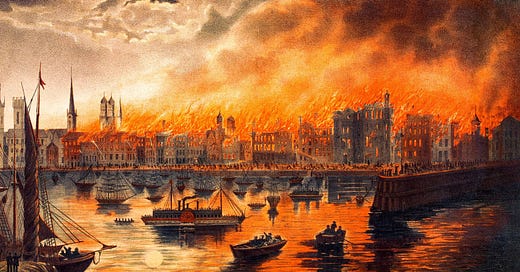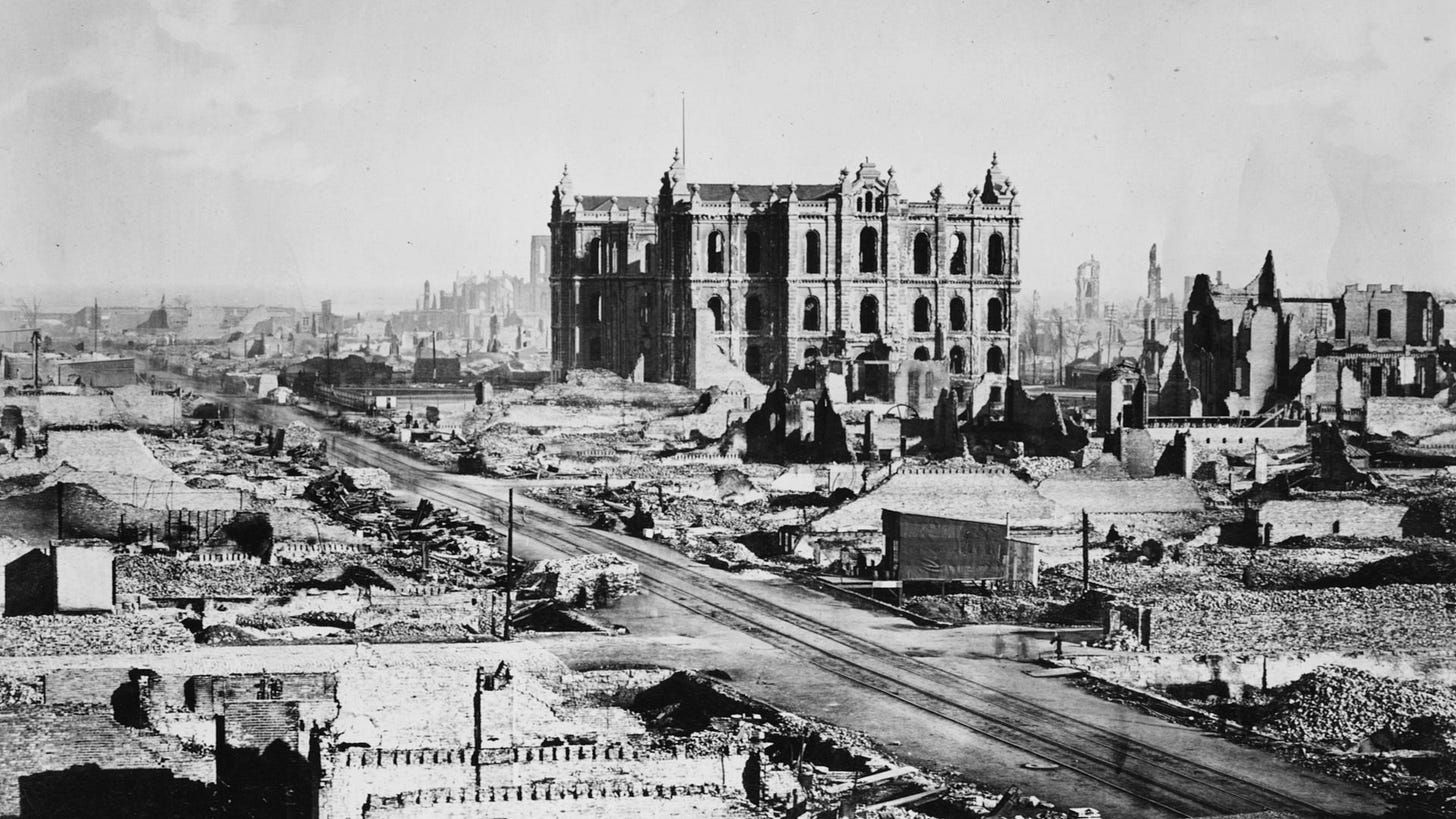On October 8, 1871, a catastrophic inferno roared through the streets of Chicago, Illinois. Known as the Great Chicago Fire, this disaster razed a vast portion of the city to the ground, forever altering the architectural and social landscape of the Windy City. This calamitous event did not merely symbolize a period of rebirth for Chicago; it also brought about a significant shift in urban planning and fire safety measures, echoing through the annals of history as a turning point in modern city development.
The fire began in a barn belonging to the O'Leary family, located on the city’s southwest side. A popular, albeit likely apocryphal tale, tells of Mrs. Catherine O’Leary’s cow kicking over a lantern, setting hay ablaze. Though the exact cause remains shrouded in mystery, the fire's aftermath is well-documented. Over two days, the flames voraciously consumed about 3.3 square miles of the city, leaving more than 300 people dead and 100,000 homeless. The damages were estimated at a staggering $200 million, an amount equivalent to several billion dollars today.
The embers of destruction, however, kindled the spirit of innovation. In the wake of the disaster, Chicago became a fertile ground for architectural innovation. Pioneering architects like William Le Baron Jenney, John Wellborn Root, and Daniel Burnham emerged to rebuild the city, giving birth to the Chicago School of Architecture. This movement not only redefined the city's skyline with the introduction of steel-frame skyscrapers but also influenced urban development worldwide. The bold, structural designs and the emphasis on functionality over ornamentation heralded the dawn of modern architecture.
The Great Chicago Fire spurred a nationwide reflection on fire safety and urban planning. The calamity underscored the need for stricter building codes, fire-resistant materials, and better-equipped fire departments. Cities across America began to reevaluate and bolster their fire prevention and response measures, marking a significant stride towards modern urban safety standards.
The fire highlighted the indomitable spirit of Chicagoans. The city’s rapid recovery and growth into a bustling metropolis exemplified resilience in the face of adversity. The commemoration of the event through the annual Chicago Fire Festival showcases the city’s ability to turn a historical calamity into a symbol of hope and renewal.
The Great Chicago Fire of 1871 is not merely a tale of destruction; it's a cornerstone of Chicago's rich history and a catalyst for change in architectural and urban planning realms. Its flames tell a story of resilience, innovation, and a relentless drive towards progress that continues to shape modern cities, making October 8th a date of paramount significance in the annals of urban development.






Death and rebirth!